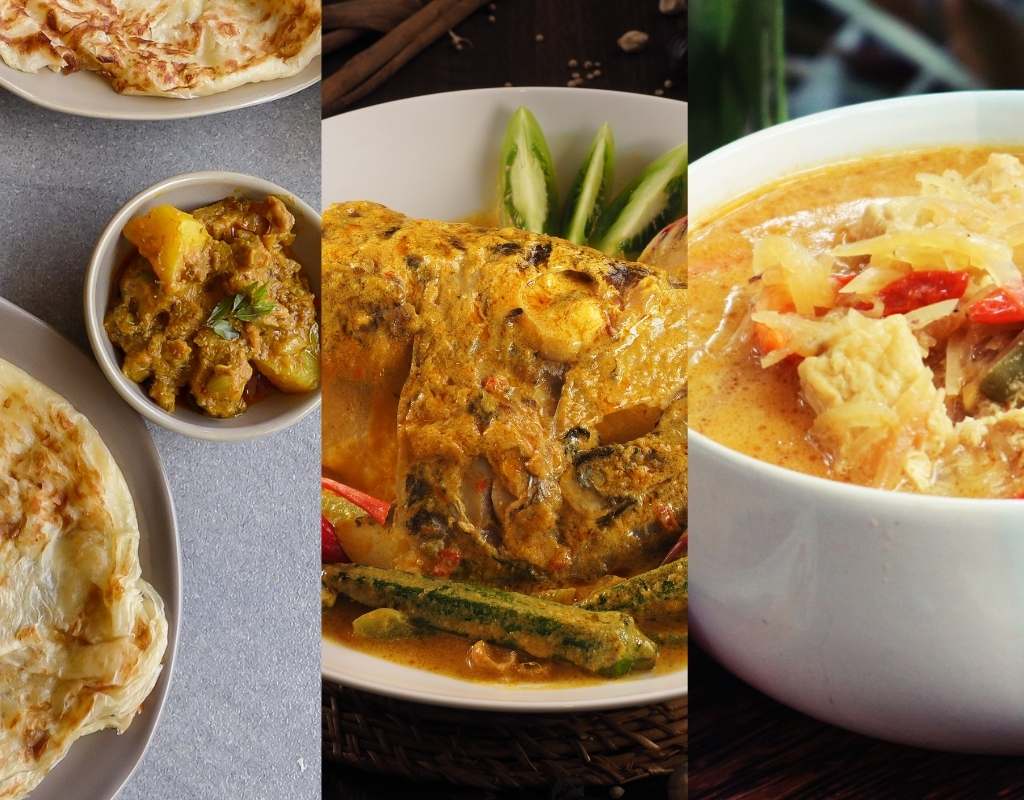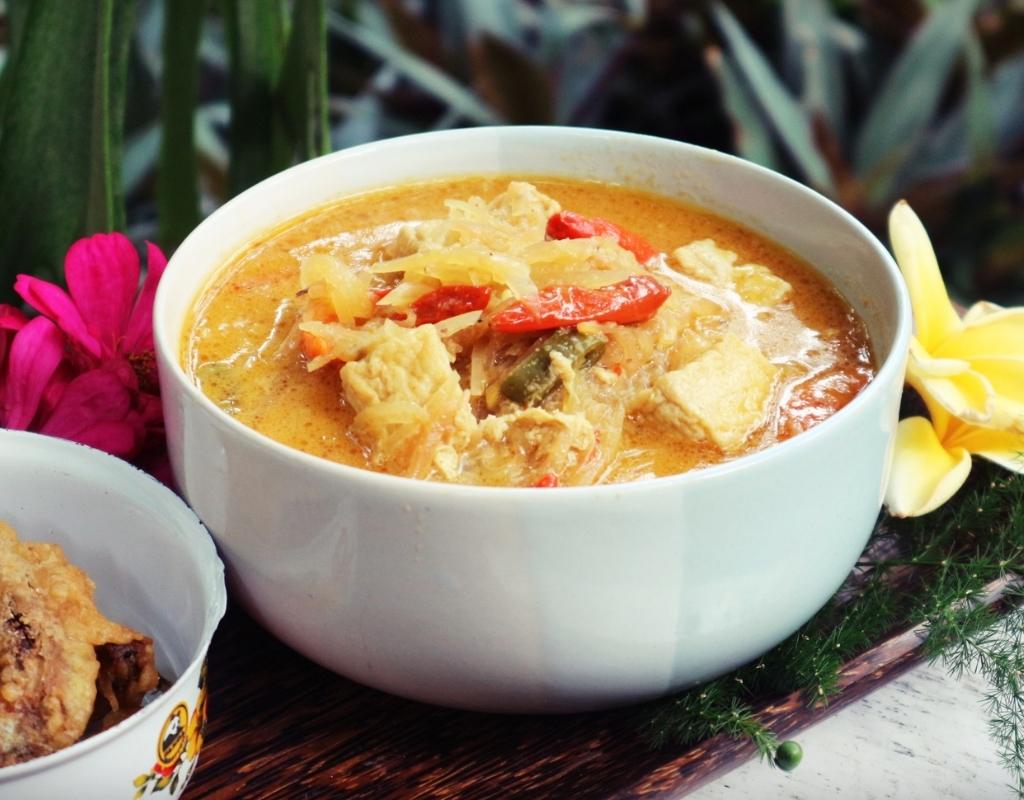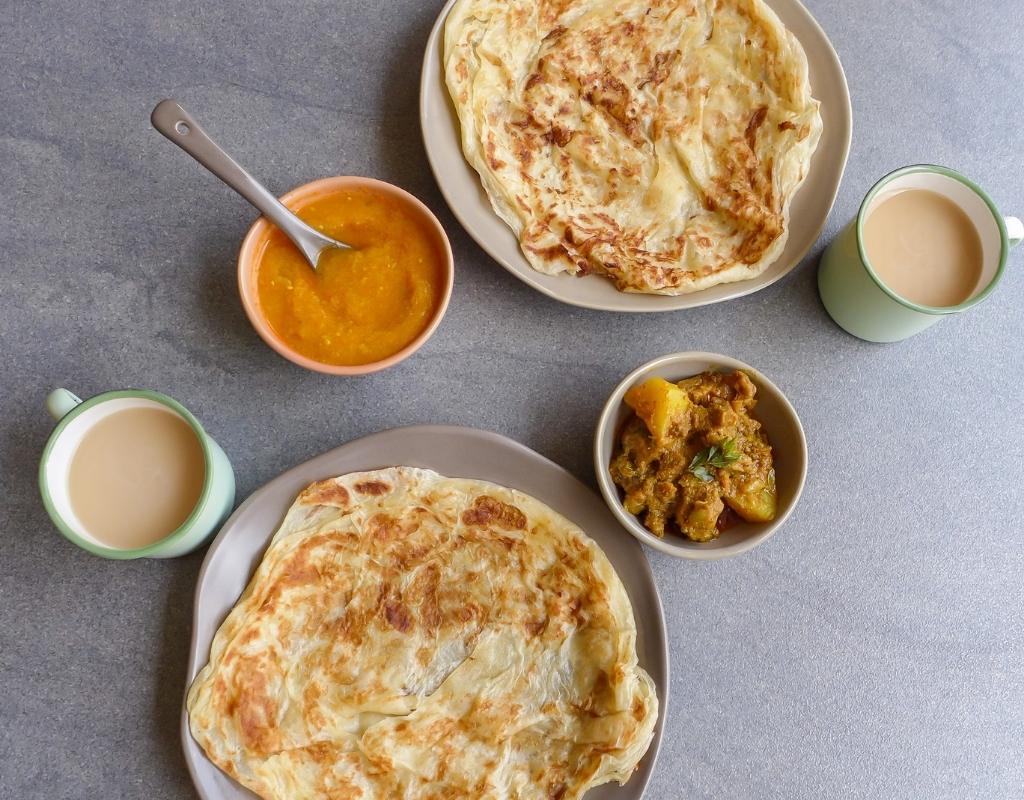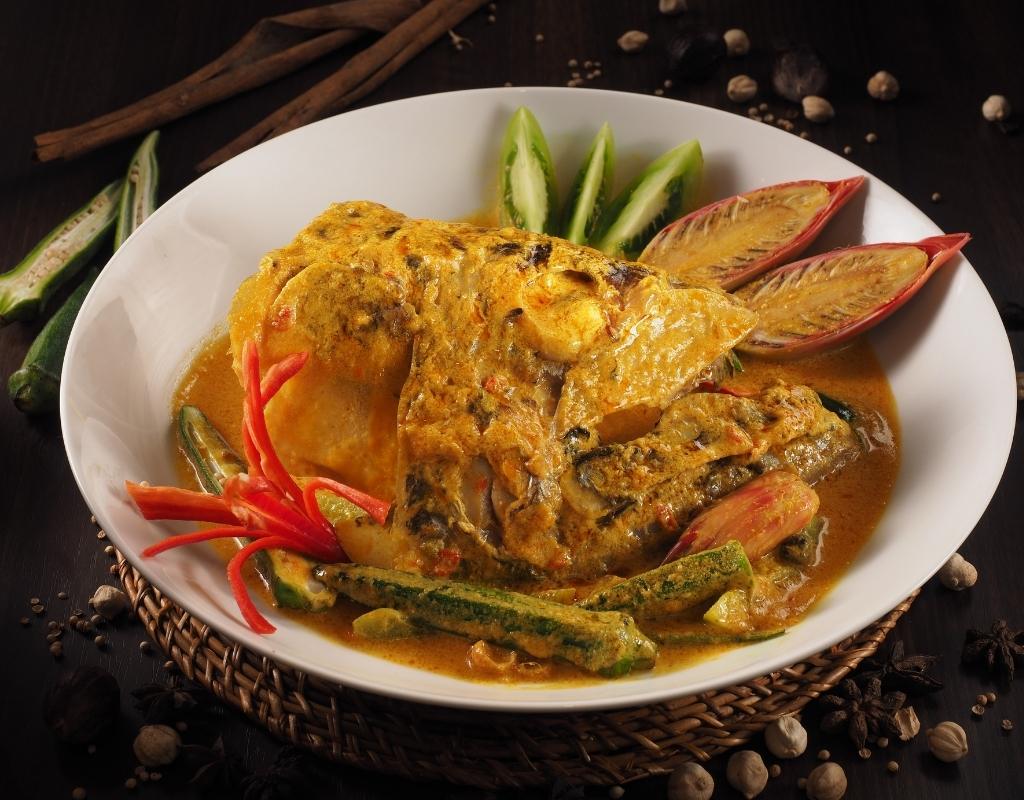Curry favour with Singapore’s cultures
- 23 May 2022

It’s undeniable that a passion for food unites Singaporeans far and wide, with many of us being exposed to a range of culinary traditions from a young age. Let’s dive into the history of one of the most common dishes we feast on here: curry.
Speaking to chef consultant, cookbook writer and self-proclaimed spice queen Devagi Sanmugam, she says, “Before the British colonial period the word ‘kari’ meant something black (in colour) or any form of meat.
So when people said they’re going to the market for ‘kari,' they’re not buying sauce but meat instead.” From her research, Devagi shares that the British frequently ate meat, sometimes with sauces boiled down from spices.
The British used the word ‘curry’ to refer to this, even though “curries weren’t as popular with Indians back then,” she explains.
Here in Singapore, we frequently encounter a rich variety of curries — thanks to our diverse cultural communities and history as a port city. Some mouth-watering curries you might be familiar with include chilli- Each culture from South, East, and Southeast Asia has its own distinct methods of understanding and preparing curries, so here’s an introduction to three iconic curries you might find on your food jaunts through the multi-cultural Lion City.
The curry takes its namesake from the Malay and Indonesian word ‘sayur,’ which means vegetable, and ‘lodeh,’ referring to cooking an ingredient until it’s soft.
What’s in a name?
Many of us today understand a curry to be a sauce seasoned with aromatic spices chock full of meat or vegetables. But did you know that the word curry is an anglicised version of the Tamil word ‘kari’ meaning charcoal or meat?Speaking to chef consultant, cookbook writer and self-proclaimed spice queen Devagi Sanmugam, she says, “Before the British colonial period the word ‘kari’ meant something black (in colour) or any form of meat.
So when people said they’re going to the market for ‘kari,' they’re not buying sauce but meat instead.” From her research, Devagi shares that the British frequently ate meat, sometimes with sauces boiled down from spices.
The British used the word ‘curry’ to refer to this, even though “curries weren’t as popular with Indians back then,” she explains.
Here in Singapore, we frequently encounter a rich variety of curries — thanks to our diverse cultural communities and history as a port city. Some mouth-watering curries you might be familiar with include chilli- Each culture from South, East, and Southeast Asia has its own distinct methods of understanding and preparing curries, so here’s an introduction to three iconic curries you might find on your food jaunts through the multi-cultural Lion City.
Unpacking Sayur Lodeh
Sayur Lodeh’s storied history can be traced back to Javanese communities in Indonesia. Thanks to Javanese immigrants, the dish found its way to Singapore and Malaysia.The curry takes its namesake from the Malay and Indonesian word ‘sayur,’ which means vegetable, and ‘lodeh,’ referring to cooking an ingredient until it’s soft.

Sayur Lodeh, a curry dish packed with vegetables like eggplant, jackfruit, long beans and carrots
Vegetables — such as eggplant, jackfruit, long beans, and carrot — stewed in coconut milk make up the heart of this traditional dish. Fried beancurd and tempeh (fermented soya bean cake) are included sometimes as well. Turmeric gives the curry a vibrant yellow hue while the spices such as coriander, lemongrass, and cloves, together with bay and lime leaves, add to the dish’s distinct flavour.
Prawn stock, belachan (dried fermented prawn paste), and hae bee (dried ground shrimp) also tend to make an appearance in local iterations of sayur lodeh. Rice and lontong (compressed rice cakes) frequently accompany the dish. The result? A hearty, aromatic, and satisfyingly spicy meal.
Looking into South Indian Chicken Curry
Vibrant, aromatic, and sporting a fiery red shade, many of us are sure to be familiar with South Indian Chicken Curry. Coconut milk, southern spices (like chillies, mustard seeds, cloves, cardamom, curry leaves, peppercorns and turmeric) and potatoes are crucial ingredients that lend the dish its distinct sweet-spicy flavour and tantalising aroma.
In Singapore, many of us feast on this style of chicken curry with piping-hot prata (Indian flatbread) or with white rice to soak up the aromatic goodness.

South Indian chicken curry, which is most commonly eaten with roti prata
Ginger, curry leaves, and coconut are commonplace in South Indian fare and chicken curry is no exception. Devagi also shares that South Indian curries generally tend to contain coconut milk and tamarind; differing from North Indian cuisine that features ingredients like milk, cheese, yoghurt, and nuts.
Investigating Fish Head Curry
Fish head curry is a uniquely Singaporean dish that you’ll be hard-pressed to find anywhere else. Usually found in both Indian and Chinese restaurants, this delectable dish distinctively marries these cultures’ culinary traditions and preferences.
Investigating Fish Head Curry
Fish head curry is a uniquely Singaporean dish that you’ll be hard-pressed to find anywhere else. Usually found in both Indian and Chinese restaurants, this delectable dish distinctively marries these cultures’ culinary traditions and preferences.Fish head curry is the brainchild of Indian immigrant M. J. Gomez, who ran a stall at Sophia Road in the 1940s. While fish head isn’t typically considered an Indian delicacy, he decided to incorporate it into his curry upon learning that Chinese customers enjoyed that rendition.
This dish has only grown in popularity since then, as many of Singapore’s ethnic groups have adapted it to their tastes. Nyonya-style fish head curry also tends to be tangier, thanks to the addition of tamarind paste, while some chefs opt to add coconut milk for a touch of creaminess and to sweeten the curry.

Fish head curry is a unique Singaporean dish that draws from both Indian and Chinese cultures
It isn’t uncommon to see vegetables such as tomatoes, lady’s fingers, and eggplant (and even sometimes pineapple!) added to the curry. Be sure to enjoy the dish with a side of rice.
Red snapper, sea bream, and sea bass are popular choices of fish served with fish head curry.
Many consider the flesh of the fish’s cheeks to be the best, while others enthusiastically savour the eyeballs and lips left behind.
Curries as the stories of culture
Food is crucial to the way we connect to our heritage, so it’s crucial to understand the dishes that we enjoy and learn about their origins. Curry is no exception, especially as it encourages us to relate to Singapore’s myriad cultures and communities.
Red snapper, sea bream, and sea bass are popular choices of fish served with fish head curry.
Many consider the flesh of the fish’s cheeks to be the best, while others enthusiastically savour the eyeballs and lips left behind.






